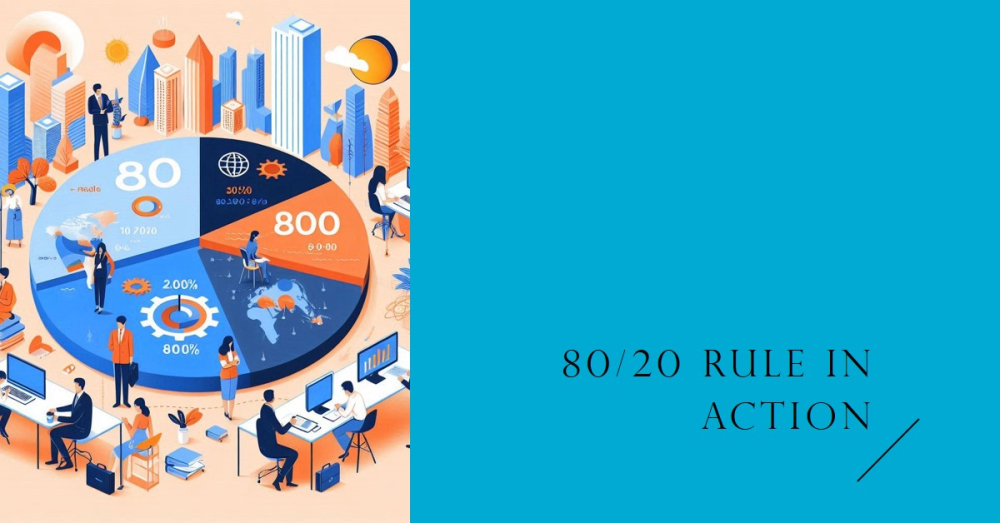
The Pareto Principle Explained
Simply put, the Pareto Principle (also known as the 80 20 Pareto Principle) is that: 80% of results come from only 20% of effort.
Therefore, we need to discover what that 20% is — and where it’s coming from.
If we applied this to affiliate marketing, it would mean that if we explored where 80% of, say, the website traffic was coming from, we might discover that it’s coming from 20% of the keywords.
That translates into 80% of the work being done by 20% of the input. In other words, it’s the quality of the input — not merely the quantity — that matters in the end.
Another way of looking at it is to say that we need to expend 80% of our energy to find the 20% that will work, that really matters.
Thus leveraging — applying the smallest force necessary in moving a large object. In marketing this is most appropriate because we can expend enormous capital without getting the desired results — unless we take this intelligent approach.
Our aim is to work intelligently rather than just work: it’s not just quantity but quality that we’re after.

Pareto Principle Examples
How can we apply this to our current project? In broad strokes, the following three ways
- Content — imagine you’re a home wares enthusiast; you discover that 20% of your content in your blogs produces 80% of your revenue. And that 20% comes from electronic gadgets.
- Channels — Now the question is: where, on which channels are you posting? FB; Instagram; Pinterest. The next question is: which of these channels is responsible for 80% of the conversions?
- Audience — Which type of audience (age; gender; education; income; location) constitutes 80% of your audience?
If we allocate most of our resources to these strategies, it stands to reason, therefore, that we can improve our performance dramatically.
It boils down to three things again in terms of action.
- Focus on the most converting (80%) content,
- Project it through the most converting (80%) channel .
- Place it in front of the most converting (80%) audience.
Mind you, that this is a kind of schematic. It’s meant to illustrate a principle — the principle of working smarter — not an actual example. How things turn out in reality is always subject to the contingencies of life. And nobody can guarantee that. On the upside that 80% could be higher for you or lower than that on the downside. However, following an established practice means that we can increase our chances. In this case it’s a matter of optimising our chances of success — that is, producing the most positive results possible under specific constraints. The notion behind the Pareto principle isn’t elimination of work but making it more meaningful as an input. Therefore, using this principle discovering where those constraints are and reducing them to practicable levels for the best results possible. What the Pareto Principle epitomises, in my opinion, is the progressive elimination of bottlenecks.
So, Should We Use It?
While it has been used in a wide variety of fields — (information science; quality control; management; computer science), it isn’t considered a mathematical law in the conventional sense of the word. It’s critics (and there are many) have pointed out (rightly, I’d say) that it’s mostly anecdotal and therefore not scientific. You can try out to what extent the Pareto Principle works for you in real life and if it doesn’t then you can stop . . . Fair Dinkum.
What’s the hard evidence? Check this out here.
